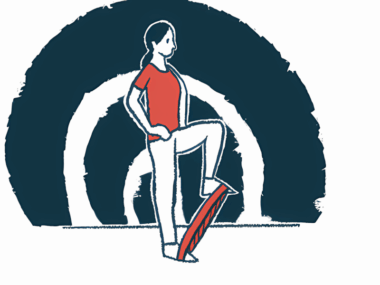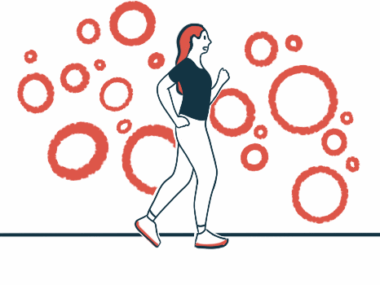In MS, culturally tailored exercise programs may benefit Hispanics
Such programs may help more patients engage in regular physical activity
Written by |

Exercise programs that are culturally tailored to Hispanics with multiple sclerosis (MS) may help these patients engage in regular physical activity, according to an interview-based study.
The patients surveyed also say they prefer exercise that’s performed three to five days per week, and led by a coach in community or home settings. They cited the availability of Spanish-language resources and consideration of cultural norms, such as gender roles and family priorities, as important factors for participating in exercise programs.
The study’s results “will support the design and delivery of exercise training programs that meet the needs of Hispanics with MS,” according to researchers.
The study, “A Qualitative Inquiry of Exercise Preferences among Hispanic Adults with Multiple Sclerosis,” was published in the American Journal of Lifestyle Medicine.
MS is a neurodegenerative disorder that affects the central nervous system, which includes the brain and spinal cord. Common symptoms include muscle weakness, numbness or tingling, balance and coordination difficulties, and fatigue.
Exercise can help manage MS symptoms
Exercise is widely recognized as a safe and effective rehabilitation strategy for people living with MS. It can help manage symptoms, improve mobility and strength, and enhance mental well-being and overall quality of life.
However, there is limited data on how to design and deliver exercise programs that are specifically tailored for Hispanic patients with MS.
To ensure that such programs meet the needs of the community, it is essential to build them based on input from the population itself, identifying exercise preferences, cultural considerations, and barriers to participation.
In this context, researchers carried out a study in which they interviewed 27 Hispanic adults with MS across the U.S. to explore their views on the ideal exercise training program. Most participants were female and middle-aged, and had relapsing-remitting MS.
Interviews covered preferred exercise modalities, frequency and timing of sessions, preferred settings, and whether participants favored exercising independently, in groups, or with the support of a coach or trainer. The participants were also asked to share ideas on how to make exercise programs more accessible and culturally relevant, and how to best advertise and promote these programs within the Hispanic MS community.
All participants preferred aerobic exercise, with walking as the most popular choice, as mentioned by 18 people.
“Walking it’s the easiest thing to do,” one participant said.
Popular activities include walking, biking, dancing, swimming
Other frequently chosen activities included indoor and outdoor biking, Zumba or dancing, and swimming.
A total of 14 participants emphasized the importance of resistance training for building strength and supporting daily function, citing exercises such as using dumbbells, lifting weights, or doing squats. The participants also pointed out flexibility exercises like stretching and yoga, as well as neuromotor training like Pilates, dance, or Tai chi, which are designed to improve balance, coordination, and core stability.
Most participants (21) had a preference for exercising three to five times per week, though some expressed a need for daily movement.
Preferences for exercise location varied. While community-based options, such as gyms and outdoor spaces, were preferred by most participants (18) for their social interaction and variety, 10 participants still favored home-based exercise for its privacy and convenience. Environmental factors such as temperature, accessibility, and safety were considered by the participants when choosing where to exercise.
Many expressed the need to have a coach or trainer, ideally someone with knowledge about MS, to lead the sessions. Group-based exercise, particularly with others who have MS or similar neurological conditions, was seen as a way to foster motivation and social support.
“It’d be great if it was just MS patients, but really any patients who had difficulty because of neurological issues,” one patient said.
Others preferred a mix of group and individual sessions, while a smaller number favored exercising alone for privacy reasons.
“Preferably by myself, where nobody is really judging you. I like to do my own thing,” a patient said.
Participants want Spanish-language resources
Cultural adaptations were seen as essential for engagement, with participants wishing for the availability of Spanish-language resources.
“If they were available in Spanish it would be really helpful,” one participant noted.
Sensitivity to cultural norms, gender roles, and everyday priorities, such as work and family, were also important to the participants. The patients reported music and dance as ways to make exercise more enjoyable and motivating, and pointed to family involvement and flexible scheduling as key to staying consistently active.
Some also emphasized the need for Spanish-speaking coaches who understand their cultural background and can create a more comfortable, relatable environment.
Finally, the participants suggested exercise programs should be offered with the help of MS-specific organizations, healthcare providers, social media groups, and information be distributed through locations frequented by Hispanics, such as churches or Mexican supermarkets.
“The current study is the first qualitative inquiry regarding exercise training needs and preferences of Hispanics is MS,” the researchers wrote. “This effort provides a strong foundation for moving forward in creating culturally appropriate resources to support the unique needs of Hispanics with MS with a focus on ongoing partnership and precedence on hearing the voice of the target population.”








